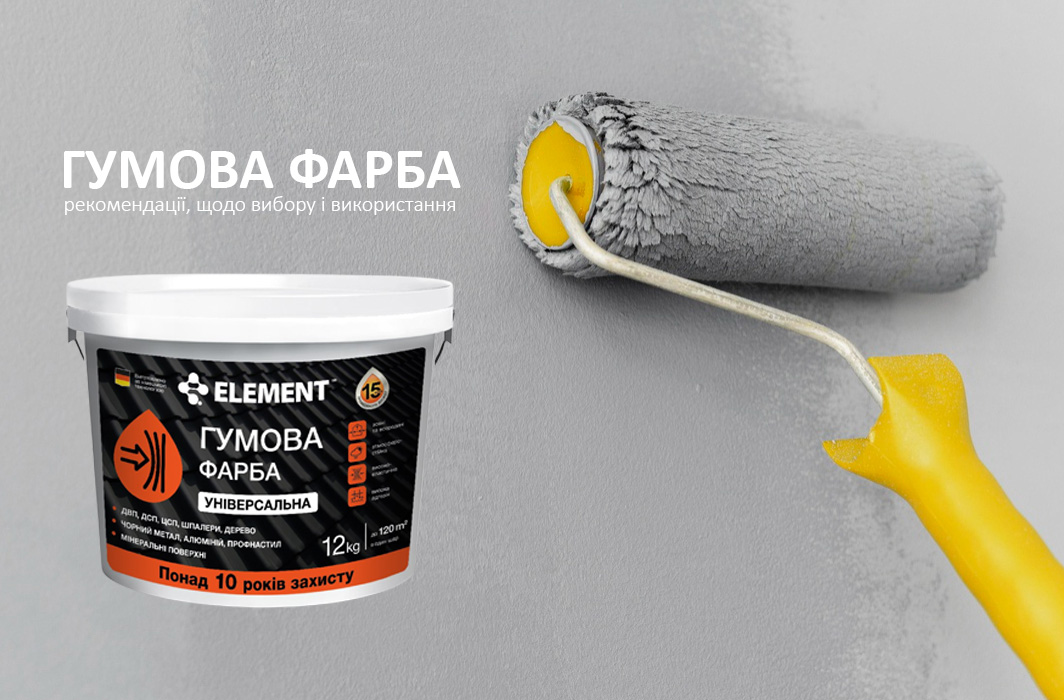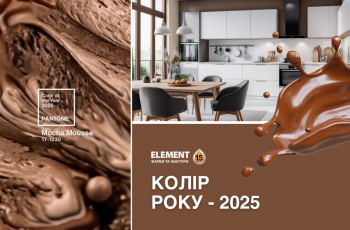Rubber paint: recommendations for selection and use
Among the variety of paint and varnish materials, a special place is occupied by universal rubber paints.

The modern market of paint and varnish products is represented by an incredible number of materials that cover various needs. Latex and acrylic paints for interior works, silicone paints for facade works, anti-corrosion enamels, glazes and antiseptics for woodworking. Among all the variety, there is a separate milestone - universal rubber paints.
This material is loved by both professional craftsmen and those who want to improve their home on their own. Its unique properties and a wide range of application fields make the product irreplaceable and able to solve many problems. In this article, we will consider the main features of rubber paint, its advantages, main areas of application, as well as provide recommendations for choosing a product and application.
Features of rubber paint
Universal rubber paint is a water-dispersion paint material based on acrylic polymers. It is characterized by high elasticity, resistance to mechanical damage and atmospheric influences. After painting, a highly elastic film is formed on the surface.

Let's consider the main advantages of this paint:
- The main advantage is the high level of elasticity of the paint. Thanks to this property, universal rubber paint is able to transform without damaging the structure and without forming cracks.
- The matte finish not only hides the imperfections of the painted surface, but also gives it a special charm. Such a surface looks well-groomed, stylish and beautiful.
- The paint is resistant to ultraviolet radiation. It keeps its color well even with prolonged exposure to sunlight.
- Rubber paint has excellent adhesion to various types of surfaces. It sticks to metal, wood, concrete, plastic and other materials.
- Increased moisture resistance makes the paint an excellent option for facade work.
- Tinted rubber paint in colors for any needs. A large palette makes it possible to choose the best option for a design solution.
What is rubber paint used for?
Rubber paint has a unique formula that provides not only excellent adhesion to various types of surfaces, but also incredible elasticity and resistance to mechanical damage. Such paint is very easy to apply to the surface, which significantly speeds up and facilitates painting work.

Universal rubber paint is suitable for the following surfaces:
- Works perfectly with metal bases - aluminum, galvanized metal, primed black metal, cast iron and others.
- Suitable for mineral surfaces - plaster, putty, concrete and aerated concrete, asbestos cement, gypsum surfaces, brick, stone. The paint can be used for both interior and exterior work, providing both protection and a decorative effect.
- Rubber paint is also suitable for wood and wood-based surfaces. It protects wooden surfaces from moisture, fungi and UV rays.
- Rubber paint is used for walls, ceilings, floors, and facades.
What to pay attention to when choosing rubber paint?
When choosing rubber paint, it is important to consider several key factors:
- Surface type. To determine exactly what material you need, determine which surfaces it will be applied to and under what conditions they will be used. This will help you choose a product with the necessary characteristics for your purposes.
- Characteristics of rubber paint. Familiarize yourself with the technical data of the product to choose the most suitable tool. It is important to pay attention to the following points: drying time, coverage, elasticity and resistance to external factors.
- Color range. Choose a color that matches your taste and the general concept of the design project.
Rules for applying rubber paint
To achieve the best result when applying rubber paint, you should follow a few simple rules:
- Surface preparation. Before applying paint, the surface should be cleaned of dirt, dust and old coatings. For working with metal bases, it is also important to remove scale, rust and treat them with an anti-corrosion primer.
- Temperature and humidity. Paint should be applied at temperatures from +5 to +30°C and relative humidity up to 80%. Also consider that you should not apply paint on the surface under the influence of direct sunlight, with strong wind or precipitation.
- Tools. For application, you can use a brush, roller or paint sprayer. The choice of tool depends on the surface area and the requirements for the finish of the coating.
- Layers. To obtain a high-quality coating, it is recommended to apply paint in two layers. The first layer serves as a base, the second layer creates the final protective and decorative effect.
- Drying time. On average, the drying time between layers is 2 to 4 hours.
Nuances may depend on the specifics of a particular product, so always pay attention to the instructions from the manufacturer.
Advantages of working with ELEMENT rubber paint
Universal rubber paint ELEMENT is made on the basis of dispersion, which provides a high degree of adhesion to various materials. This paint has a high resistance to abrasion, which corresponds to the 1st class of wear resistance according to DSTU EN 13300, as well as increased water resistance. It does not contain organic solvents and has no unpleasant smell.
Advantages of ELEMENT rubber paint:
- Optimal composition. The rubber paint contains the following components: specialized acrylic dispersion, titanium dioxide, pigments, functional additives, mineral fillers, water.
- Environmental friendliness. ELEMENT rubber paint contains 40 g/l of volatile organic compounds. Note that the maximum permissible concentration of VOCs, according to the Technical Regulations of Ukraine on the limitation of VOC emissions, for this product (subcategory A/4) is 130 g/l.
- Economy. Paint consumption per one layer for smooth metal and wooden surfaces reaches 100-180 g/m², for mineral surfaces about 100 g/m². The exact consumption depends on the grain of the base and is determined by test painting directly on the object.
- Speed of work. The drying time of one coating layer before applying the next layer is 2 hours, which allows you to carry out work at a comfortable speed. Full strength and the ability to perceive mechanical loads occurs after 28 days, at an ambient temperature of +20°С and a relative humidity of 60%.
- Durability. The coating retains its properties for many years without losing its presentable appearance.
- Ease of use. The paint is easy to apply and lies evenly on the surface.
Rubber paint is a universal material for painting both outside and inside the room. It combines high quality, aesthetic appearance and durability. If you are looking for a reliable and modern solution for your home, then this paint is for you. Don't delay - you can buy ELEMENT rubber paint today in one of the ELEMENT branded studios or in the construction hypermarket chain EPICENTER!


